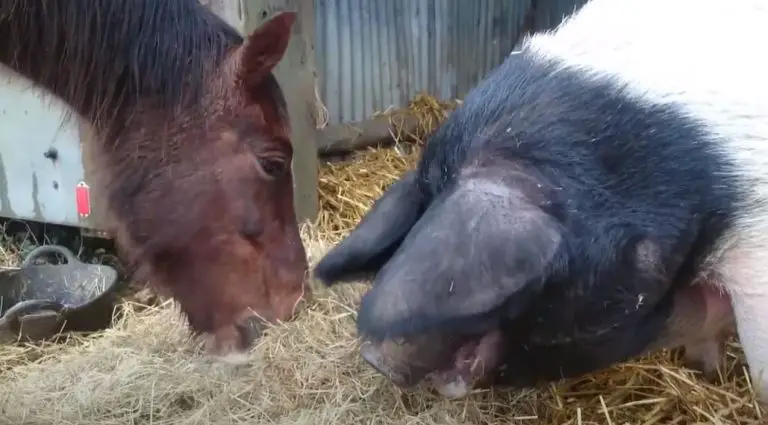Do Hedgehogs Have Whiskers? (Find out how they use it)

The hedgehog has existed for 60 million years. It is one of the oldest mammals on Earth that even survived the Ice Age.
Hedgehogs are nocturnal animals that normally walk long distances and orient themselves very well despite their poor eyesight. They create a kind of map in their head and remember hiding places, lakes, and feeding grounds.
The long whiskers that hedgehogs have, similar to those of cats, help them with this special orientation function. can also smell and hear their prey very well. During the day it is usually bedtime.
Hedgehogs mate in late summer. Despite the sting, the male hedgehog mates with the female from behind. However, there is no risk that the male hedgehog will be injured, as the female skillfully applies the spines once she has surrendered.
After mating, the hedgehog’s parents separate again. Because hedgehogs are solitary. The mother of a hedgehog is always a single mother.
What are hedgehog whiskers?
Whiskers are not just extra long facial hairs, but they serve a totally different purpose. Whiskers, also known as “vibrissae”, are the thick hairs that surround the nose and jaw of hedgehogs.
To be exact, whiskers are specialized hairs that are attached to sensory nerves around the dog’s face. Hedgehogs, rabbits, rats and many other animals also have whiskers.
Why do hedgehogs have whiskers and what is their use?
The whiskers of hedgehogs are more important to their daily lives than you might think.
So, what function do whiskers have in a hedgehog? They happen to play a crucial role in the way hedgehogs relate to the world around them.
Unlike normal hair, the hair follicles at the base of the whiskers are equipped with nerve endings that make them very sensitive to everything that happens outside, from physical objects to changing air currents.
When the hedgehog’s whiskers come in contact with something, the nerves send signals to the dog’s brain that allow it to evaluate its surroundings, make mental maps, and even allow it to sense a nearby foreign object in the dark before it bumps into it and gets injured.
It’s similar to the way humans sense things (especially when visibility is poor) with their hands.
Hedgehogs have very poor vision
The hedgehogs’ vision is poor and the eyes’ position doesn’t allow them to estimate the distances properly, so it is often said that the hedgehogs have no sense of space.
The use of whiskers is an essential supplement to the poor visual deficiency of hedgehogs. Hedgehogs have a scotopic vision, which means that their visual perception occurs with very low levels of illumination.
They have low visual acuity and light is received by the rods of their retinas, which are sensitive to blue and blind to red.
It is believed that hedgehogs possess a monochromatic vision, which means that they are able to see only one color, which is yellow, instead of all colors.
You may try to imagine it thinking of a gray scale picture, but with yellow. However, let to reiterate that in good light conditions, it is known that hedgehogs could differentiate certain colors.
The hedgehog whiskers also help them to calculate distances
In the same way that these whiskers guide the animal when there is little or no light, they also do so when the animal is going to pass through narrower than usual places.
The whiskers of hedgehogs are very useful when measuring distances and spaces. When the hedgehog is located in a narrow place, it is able to find out if it fits through it thanks to its vibrissae, since they can make dimensional relationships with the whiskers located in the muzzle.
Taking this characteristic into consideration, the hedgehog will usually examine the areas with its head before going through them. With the stored information in this first exploration, the animal will be able to find out if the rest of its body fits in the area or not.
Hedgehog sensory organs
As twilight and nocturnal animals, hedgehogs have an excellent sense of hearing, similar to the relatively closely related bats, they can still hear frequencies well into the ultrasonic range. This enables them to perceive the slightest noises, such as those made by small animals when moving.
Conversely, react hedgehog to loud noises (whistling, clicking – eg lighter Click pops, squeaks, cries) with a frightful wince or rolling.
The sense of smell is just as important for looking for food, for finding fellow species and for orientation.
The cool, moist snout of healthy hedgehogs can give off clear droplets, especially when they are excited.
A special behavior of the hedgehog is probably related to the sense of smell: salivating .
If the hedgehog smells a substance that is still foreign to it, it is first sniffed extensively, then licked or chewed on, apparently foamy saliva forms in the process. This is spread on the side of the back with the tongue out and the head dislocated after the test of the substance has ended.
Always seen as a reaction to my old real leather hut slipper with sheep’s wool content. All hedgehogs found this very interesting, even though it has often been washed in the washing machine.
Whether this behavior is used to cleanse the taste or olfactory cells or to pass on interesting smells to conspecifics – it is completely harmless and has nothing to do with rabies, as some people previously assumed.
The sense of touch (vibrations) is also well developed, the long whiskers, the muzzle and the hair on the side of the body are responsible for this. Hedgehogs are very sensitive to touching the forehead, head, neck spines and side hairs of the body, the back region is quite insensitive. On the contrary, if you stroke the spines from front to back from the middle of the back, most hedgehogs relax increasingly.
The eyesight is very moderate. As nocturnal animals, they hardly need this when the other senses are available. This means that blind hedgehogs can also get along well in nature.
Hedgehogs have a very good sense of direction and/or an excellent memory for orientation, they know all the hiding places and places to eat in their area.
Therefore, if a hedgehog is released in an area that is unfamiliar to him, he should be offered “help” for a few days with regard to food and sleeping space, until he could orient himself.
With adult female hedgehogs, caution is advised when “taking them along”, any young ones who may be present perish miserably.
Do hedgehogs have a good memory?
Hedgehogs do indeed have a very good memory when it comes to their territory. They remember feeding places by creating a map in their head.
It is said that the hedgehog’s brain is small in relation to other mammals, but evidently, it has a good memory and can learn certain patterns. Also, because it has a very good sense of smell and hearing, it can complement what it remembers with its senses.
Hedgehogs function through associative memory, so while they may be able to remember other animals, objects or activities through association, hedgehogs have no long-term memory.
They do not retain past experiences or moments, but rather what they felt in order to associate a certain place with something they consider positive or negative. In this way, their memory is focused on remembering significant biological information, for example, where to find food.
Can hedgehogs squeeze through small gaps?
According to the characteristics of places where the hedgehog finds refuge in nature, it is accustomed they can easily slip through any gap.
The hedgehog prefers varied landscapes with shrubs, broad-leaved trees, bushes, open and cut grass surfaces, piles of leaves and bushes, as well as rocky and stony places; it is an excellent climber.
The hedgehogs remain increasingly in the settlement area because they can no longer find places to eat or hide in the adjacent area (large agricultural areas without trees and bushes, softwood monocultures).
From time to time you can even find hedgehogs under the mower, it is surprising how many gaps they can get into.
What happens if you cut off a hedgehog’s whiskers?
Trimming the whiskers will not harm the hedgehog, as the whiskers do not contain pain receptors, nor is it permanent because the whiskers will grow back. But losing some or all of the whiskers can alter the hedgehog’s spatial awareness, which can lead to confusion and disorientation.






